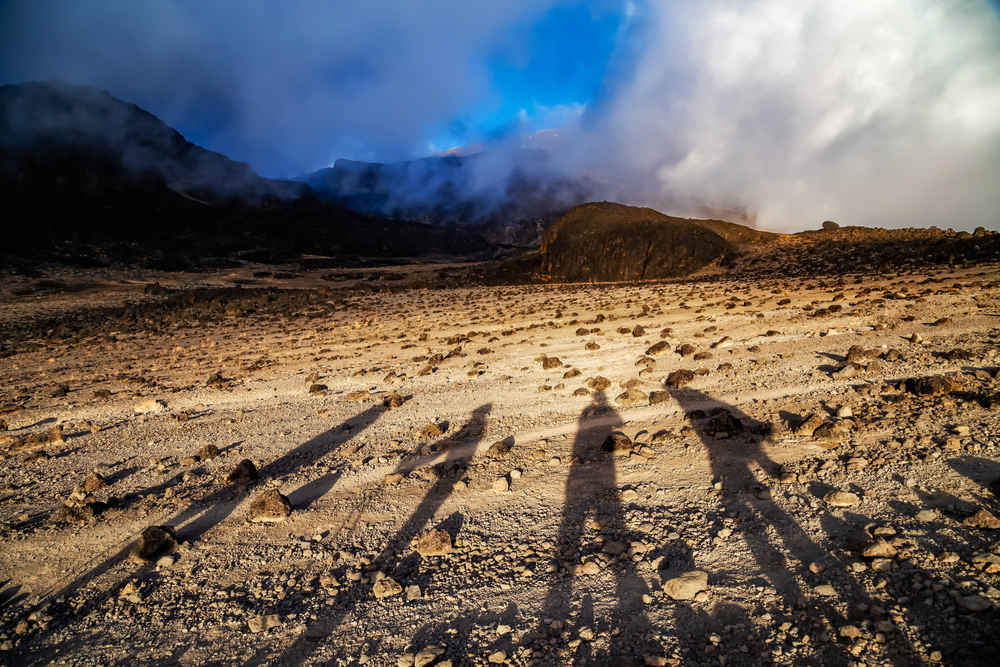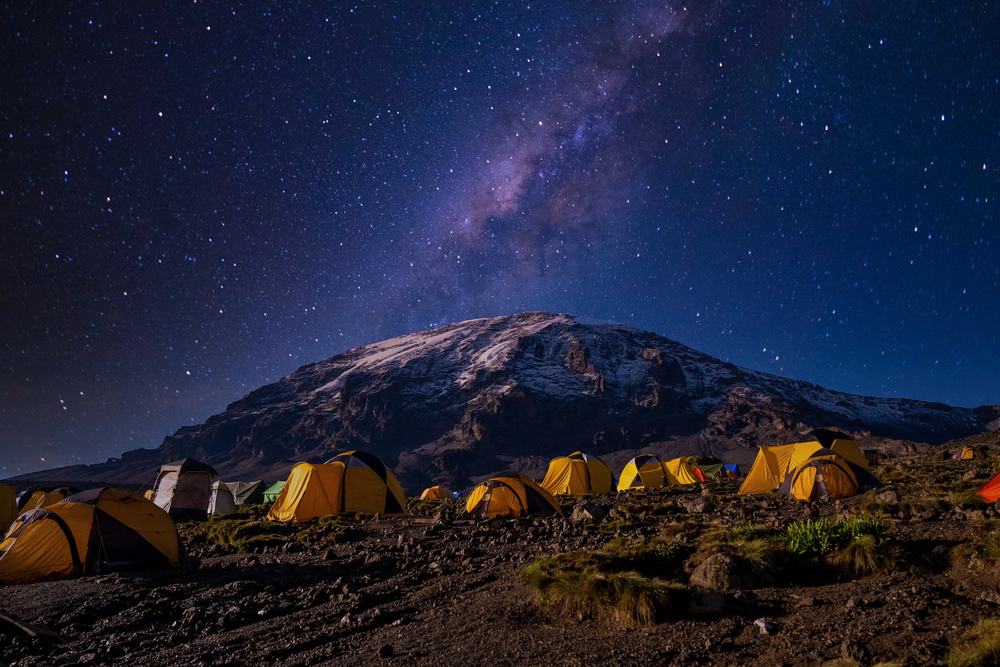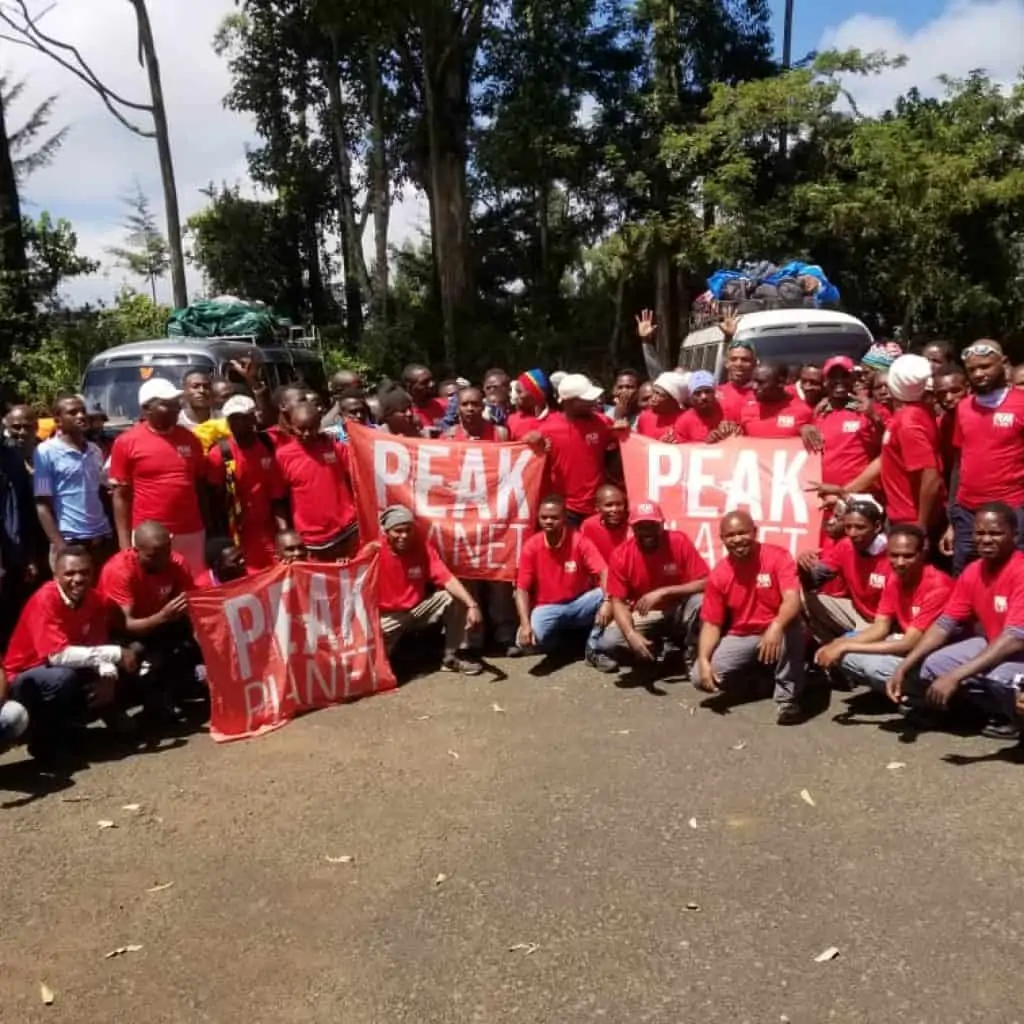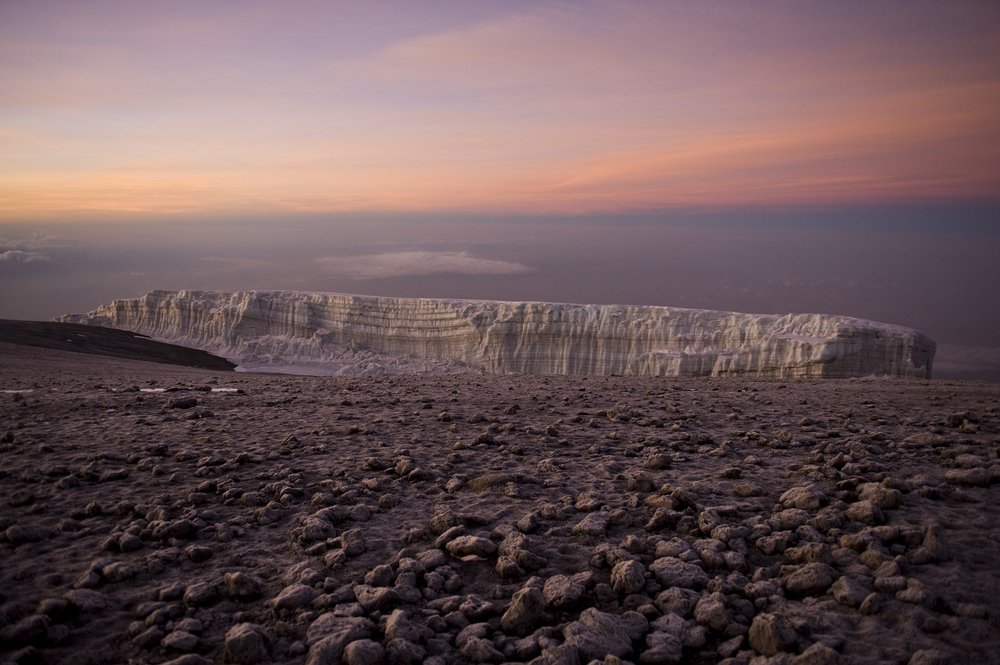When it comes to climbing Kilimanjaro, most people develop an expectation of what it will be like based on sites and videos they see.
However, it’s one thing to read about something and another thing to do it.
Here are things that surprised me while I scaled Africa’s highest peak.
The Distinct Ecological Zones

There are five climate zones on the way to the summit of Kilimanjaro. Every day we passed through a different type of terrain with unexpected changes in scenery.
With successive each zone, the temperature dipped and the plant life diminished. Though there were transition areas between the zones, for the most part it was quite clear which zone we were in based on the landscape.
We started our trip in town, in the cultivation zone, surrounded by coffee plantations and farmland. The trail began in a the rain forest zone – in the lush, green jungle. Next, we entered the heather zone, characterized by brush and high grasses. In the highland desert zone, the wide-open landscape becomes more bare, filled with mostly dirt and rock, like being on the surface of the moon. Finally, we reach the arctic zone, which as can imagine, is cold and snowy.
The Kindness of Tanzanians

You can get a good idea of what kind of effort climbing Kilimanjaro entails, what gear you need, and what the weather is like from your research. No pictures or videos, however, can fully prepare you for how friendly the people are in Tanzania.
The guides, porters, drivers, everyone that we interacted with on our crew, were so kind, encouraging, and supportive. It’s not as if I expected the staff to be rude or unhelpful, yet I was legitimately surprised by how genuine they were. Their efforts and hard work made almost every aspect of the trip surprisingly easy.
The kindness extended beyond just the Peak Planet staff. The other Tanzanians we encountered whether on the mountain, in town or while traveling were equally as warm and friendly. They authentically welcomed us in their country and wanted us to have the best experience.
The Beautiful Night Sky

Most of us live in cities where we rarely get to see the stars due to light pollution.
Before my trip, I had just come from the northern hemisphere where it stays light out until 9:00PM. So I was not expecting it to get pitch dark by 6:00PM in the evening. But there we all were on that first clear night leaving the dining tent, mouths agape, staring at an impossibly starry sky. The unfamiliar constellations of the southern hemisphere were mesmerizing. It made for a spectacular nighttime show each time we left our tents at night.
The Helpful Support Crew

A large team of porters, cooks and guides supported our group on Kilimanjaro. They are responsible for making sure our needs are met.
Because of them, we didn’t have to think, plan or worry about anything. Our only job was to walk. After each day, with nothing in particular to do other than hike to the next camp, we would arrive to find our sleeping tents, dining tent, and toilets all set up and ready for us. It was so nice to not have to set up tents, prepare food, or fetch water.
We could relax and hang out in the clean and spacious dining tent until dinner, drinking warm beverages and making new best friends with our fellow climbers. Then dinner was served. The meals were unexpectedly fresh, tasty, and filling. There was such variety! We stayed in the dining tent until it was time to go to bed.
When we all finally crawled into our tents, we were safe, warm, and comfortable throughout the night. In the morning we were greeted with the wonderful treat of warm water for washing up, followed by coffee, tea or hot chocolate and a hot breakfast. Then we were more than ready to tackle a new day.
The Challenge of Summiting

Climbing Kilimanjaro was both harder than I expected and easier than I expected.
The difficulty of summit day may have come as a surprise because everything else about the trip was so easy (thanks to our support crew).
The days leading up to summit day involved slowly gaining elevation, walking up relatively gentle trail with plenty of down time to rest and acclimate. I didn’t feel tired or exhausted from the other day hikes, which we all handled with ease. Suddenly, we were at 15,000 feet in elevation, woken up at midnight and needed to begin our ascent in the dark.
I’ve climbed mountains before, both on guided trips and on my own. No matter what other experience you have, the push to the summit is going to be challenging. It’s a very, very long day, at a high elevation, with part of it in the cold.


